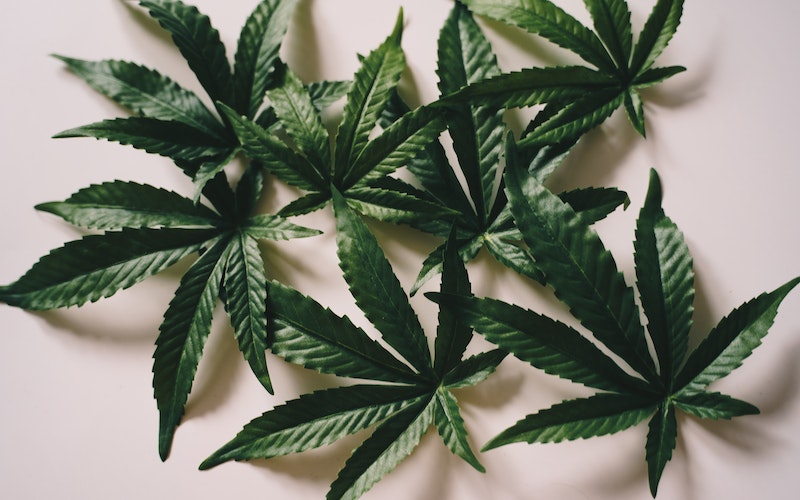Perhaps one doesn’t think of cannabis when conjuring images of Oklahoma, but over the past several years the Sooner State has emerged as a hotspot for cannabis production and distribution. Based on per capita consumption, Oklahoma is now the largest medical marijuana market in the country.
In 2018, Oklahoma voters authorized the state’s medical marijuana program with State Question (SQ) 788. In direct response to the passing of SQ 788, the Oklahoma Medical Marijuana Authority (OMMA) was created.
According to Porsha Riley, the Public Information Officer for OMMA, “Medical marijuana has led to an economic boom in Oklahoma. We are now one of the country’s largest manufacturers of these products.”
Oklahoma has no cap on the number of plants allowed per grower and no limit to how many dispensaries the state can have.
The state boasts more retail cannabis stores than Colorado, Oregon and Washington combined and has also eclipsed California as the state with the largest number of licensed cannabis farms, despite a population only a tenth of California’s.
For these reasons and others, Oklahoma has become a surprising epicenter in the world of cannabis.
“The Oklahoma Legislature has appropriated nearly $70 million to common education since fiscal year 2020,” Riley said, “and recently, OMMA announced a $2 million allocation to an Office of Juvenile Affairs substance abuse program.”
The next question is, will recreational cannabis become legal in Oklahoma? Activists have begun organizing to secure a referendum on the ballot in 2023, seeking the legalization of the recreational use of marijuana in Oklahoma, so that question could be answered as soon as next year.
This Tech Zone will focus on the innovators setting the foundations for what may become one of America’s most influential cannabis technology centers.
Embracing Aeroponics
Surna Cultivation Technologies is a leader in indoor agriculture facility design. It equips growers with a team of expert architects, engineers, project managers, and a wide selection of equipment designed specifically for indoor farms. One of its clients is William Dunbar II, founder of XP Agronomics, located in Tulsa, OK.
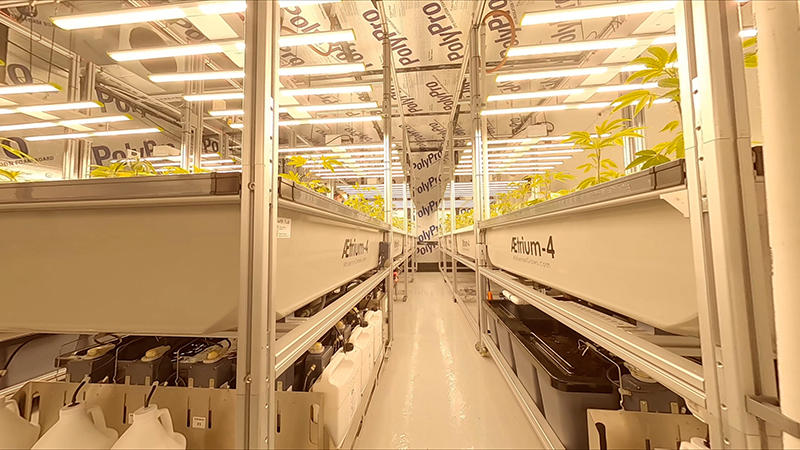
Part of Dunbar’s facility involves aeroponics, which is a plant-cultivation technique where the roots hang suspended in the air while a nutrient solution is delivered in the form of a fine mist. Dunbar partnered with Surna at every level to ensure his innovative ideas manifested in the most efficient and productive ways.
“Surna understands our strategic approach,” Dunbar said. “They know who we are and how we aim to operate inside the cannabis space and the state of Oklahoma. It’s a wild west here. We’re slowly maturing.”
Innovative Systems
“People in the cannabis world, especially master growers, can become nervous about moving away from their bread and butter,” Dunbar said. “But, the way many people are growing cannabis is the same way we’ve cultivated plants since the beginning of time. Methods like aeroponics offer a modern, more efficient way.”
Aeroponics is a cutting-edge cultivation method that utilizes high-pressure pumps to spray each plant 24/7 for quick and optimal growth. While the initial cost may be higher than traditional growing methods, aeroponics takes less manpower overall. This grow system is great for commercial cannabis growers looking to have larger, more frequent yields.
“We have our proof-of-concept room up and running,” Dunbar said. “We will be turning on the next couple of rooms in the next two months. Cannabis is an industry that needs more innovation and more technology. I work in canna-tech and that’s where I want to stay, in a world of innovation.”
Eco-Friendly Growing
Modern cultivators are observing numerous advantages through the use of aeroponics.
Releasing roots from the growing medium frees the plant and allows for more oxygen which can lead to faster growth. Further, aeroponic systems are eco-friendly in that large quantities of plants can grow in small spaces and since it’s entirely indoors, there is no nutrient run-off to contaminate nearby waterways.
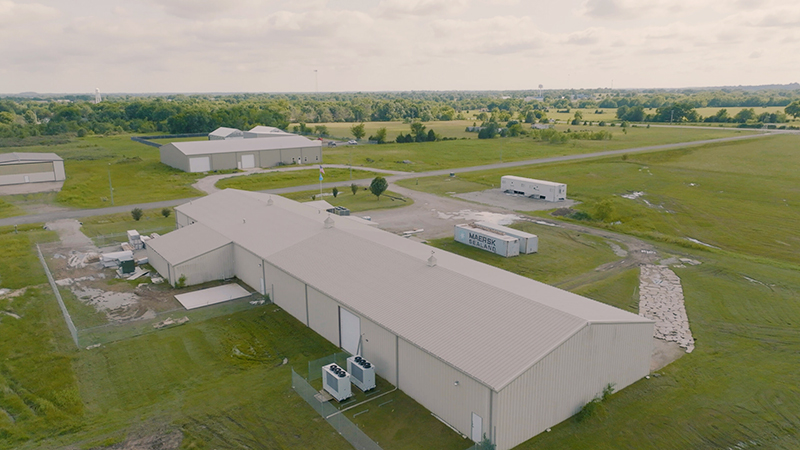
“Our goal is to be the most environmentally-friendly and economical way to grow cannabis,” Dunbar said.
In theory, aeroponics can be used to grow any type of plant, but in practice, the method seems to work best with leafy greens, culinary herbs, strawberries, tomatoes, cucumbers, and cannabis.
The ‘Wild West’
“Oklahoma is booming for several main reasons,” Dunbar said. “The land is relatively inexpensive and utility costs are low. A lot of growers and people with innovative ideas are flocking to our state.”
Though it’s not as flashy as California, Colorado, or other cannabis-forward states, Oklahoma is quickly emerging as a leader in the industry. The state currently has more dispensaries than any other in the country.
“I love being part of this movement, of what’s happening right now in Oklahoma,” Dunbar said. “I plan to keep perfecting the technology, and although aeroponics unlocked my confidence in terms of growth potential, it will never come at the sacrifice of product quality.” ϖ
Cleaning Everything But the Plant
The Oklahoma cannabis market has enjoyed an unencumbered run over the past several years. As a result, the state is now home to almost 13,000 marijuana business licenses, including nearly 9,000 growers and approximately 2,300 dispensaries. With all of these new entities, the demand for facility sanitation and cleaning has increased exponentially.
Since 1980, Clean Control Corporation has manufactured OdoBan Concentrate and RTU, among many other products. OdoBan Concentrate has become a coveted commodity among cannabis growers.
Cannabis plants are fragile and environmental or warehouse conditions can impact growth and development. If the production area is not kept clean and in a state of microbial control, it will impact both employees and the plants.
Plants are often moved from room to room during various stages of growth. This is an ideal time to thoroughly clean the warehouse. Some growers remove plants solely to clean the grow room. Clean Control offers Odoban for whole warehouse cleaning as well as a shoe bath solution to ensure contaminants don’t enter grow areas on employees’ feet.
“Our goal is to clean everything but the plant,” said Bill Frazier, national sales director at
Clean Control. “The shoe bath ensures a grow house stays free of bacteria, dirt, bugs or anything else that could negatively affect the growing environment.”
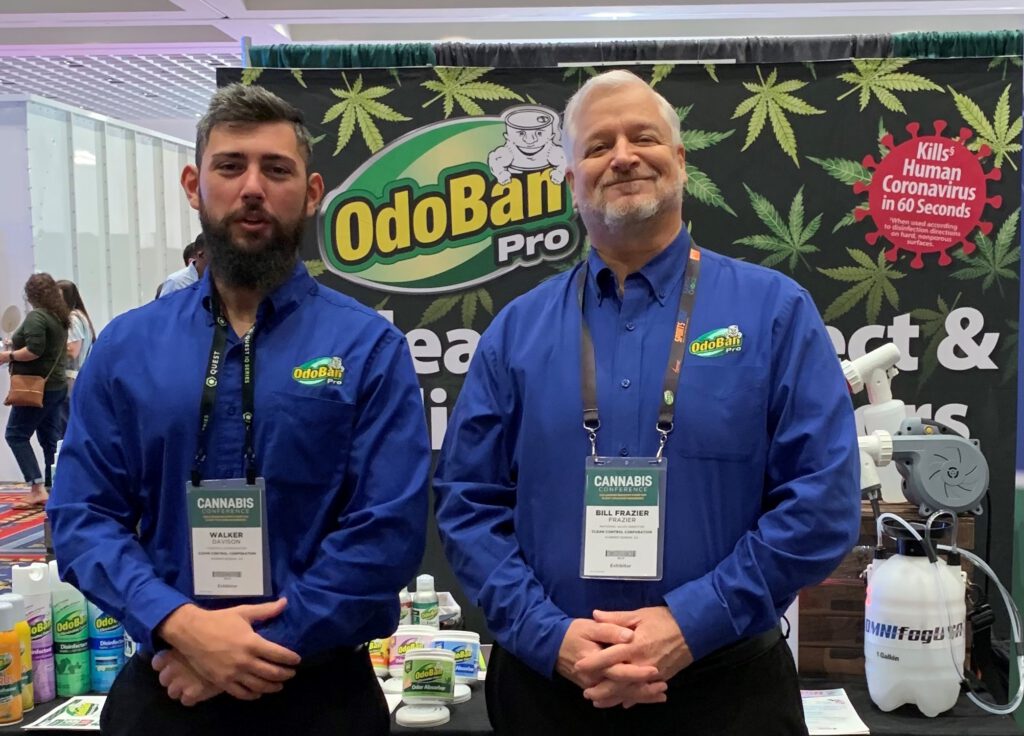
Standing Out From the Crowd
Three main factors contribute to the effectiveness of OdoBan. First, the product is a quaternary disinfectant, which means it’s antibacterial and certified by the EPA. Secondly, OdoBan contains a small amount of soap which makes it an all-purpose cleaner. Finally, the product is a permanent odor eliminator.
“All three work together to make OdoBan work so well,” Frazier said. “It kills a lot of bacteria. Customers also learn that it’s not simply a masking agent. It permanently eliminates odors.”
According to the Oklahoma Uniform Building Code Commission, as outlined in OAC Title 748, Chapter 20, “except for the licensed dispensaries, commercial establishments shall ensure any odors that may arise from any stage of marijuana production or the disposal of marijuana are not detectable by the public from outside the processor facility.
Regulations like these make odor eliminators such as OdoBan even more important.
A True Community
“We’re actively pursuing the grow-house business and we’re working on the dispensary side of things,” Frazier said. “Cleaning a dispensary is different from cleaning a grow house; however, we are offering consumer products that help eliminate cannabis odors from homes and vehicles.”
Frazier said the cannabis industry is a unique community and that his team is enjoying being part of the space. There is unparalleled energy surrounding the world of cannabis.
“When we first started working with growers, we went to cannabis shows and conferences,” Frazier said. “After going to a few we learned right away what a friendly, collaborative community it is. Hours after the speakers left the stage at the 2021 Cannabis Conference, and the show was over, attendees were hanging out in the lobby and the hallways sharing information. One of the attendees said it best, ‘this is not a trade show, it’s a community.’”
Want More Like This? Read the latest issue of Cannabis & Tech Today.
OK Security Isn’t Okay
No one wants to lose product to theft. It’s costly and puts business owners in a position to prove they were following proper regulations when the product was stolen. It’s the operator’s responsibility to “deter and prevent unauthorized entrance” into areas containing cannabis.
Further, “Commercial licensees are responsible for the security of all marijuana items on the licensed premises or all marijuana items in their possession during transit.” With the cannabis industry in Oklahoma booming, security is a key player.
The team at Morse Watchmans has been helping businesses with safety and security since 1882. They have been in the field of key control since 1993 when they developed the KeyWatcher, the first stand-alone key management system that electronically releases keys to authorized users.
The original system allowed keys to be stored in a smart storage cabinet that accounted for each user via a specific access code, time, and date. Through the years, they have built on this flagship prototype to become a global leader in the field with 54 dealers in 60 countries.
“The main things I love about this company are the history, solid reputation, and brand recognition we’ve built through the years,” said Tim Purpura, vice-president of sales and marketing. “We have an incredible product that we are proud to stand behind.”
Entering the Cannabis Space
Morse Watchmans works with numerous industries, including casinos, sports complexes, correctional facilities, airports, and more. They have been dabbling in the cannabis space for three years, but about 18 months ago decided it was time to dedicate significant time and attention to this evolving, ever-growing space.
“I look at the cannabis space like the early days of casinos,” Purpura said. “The industry is still essentially in its infancy and the need for security will continue to grow, especially as more and more acquisitions occur.”

In the highly regulated cannabis industry, cash is a major player and security procedures are scrutinized.
The storage of cannabis assets demands constant controlled access, which is where protocols such as control key access come into play.
Additionally, the transportation of cannabis is highly regulated, so key control and access in terms of vehicles are also paramount.
A Need for Security
“As the industry grows and legislation tightens up on safety and security regulations, there is a clear need for systems such as key control, controlled access, and audit data,” Purpura said.
Much of the financial and product loss in the cannabis industry is from employee theft. While cannabis assets are often locked behind closed doors or within a vault, if the key to one of these controlled areas is accessible to all employees, then the likelihood of embezzlement or internal theft increases, and it becomes challenging to determine the culprit.
“Each state is implementing increasingly stringent security measures for both dispensaries and grow facilities,” Purpura said. “All of us in the security industry are wrapping our arms around this movement.”
Educating the Industry
“One thing lacking in the cannabis space is education about security,” Purpura said. “Physical keys are not going away. Business owners and growers need more knowledge on the hierarchy of keys and how keys contribute to the security of the physical plants and other assets.”
Morse Watchmans’ products and panels are made in the U.S. and are backed by numerous testimonials. Purpura says their team is ready to lead the charge in terms of cannabis key security and education.
“There are many emerging hotspots, such as Oklahoma,” Purpura said. “We are excited to help these growers learn and create protocols that result in a safer grow facility or dispensary.” ϖ
Driven by Purpose and Passion
Established in 2017, Luna Cultivation works to meet the needs of growers across North America.
It partners with lighting manufacturers across the U.S. to ensure growers have access to fully vetted lighting and electrical solutions. Oklahoma is one of the largest concentrations of growers in the country — it costs just $2,500 to apply for a cultivation license. With such fierce competition, it’s vital growers partner with companies prioritizing efficiency from the start.
Luna offers building plan reviews where their team reviews a grower’s overall building floor plan to help them better understand each area of grow space as it relates to the life stage of the plants.
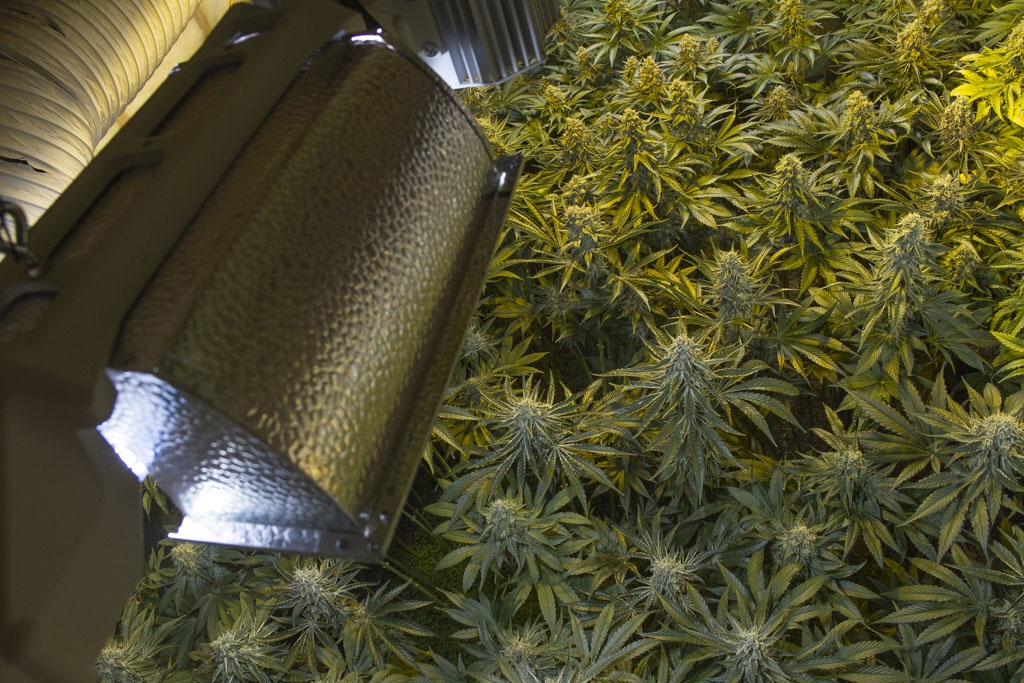
It also provides lighting design tools and consultation to ensure growers develop an optimal lighting plan. Additionally, the Luna team offers assistance and consultation for designing, engineering, building, and integrating complex power and control systems to maximize efficiency.
Support Within the Industry
Luna Cultivation Founder Dañiel Luna-Fuller is a veteran with experience in horticulture lighting and hydroponics. One of her favorite clients is Wavy Flower Company, a business primarily serving growers in Oklahoma.
“We’re big advocates for each other,” Luna-Fuller said. “They grow for seed so other cultivators can have something to start planting. Like Luna, it’s a female-owned company, so we had an instant connection.”
One of Wavy Flower’s most successful strains is called Oregon Wine. Many growers are seeing success with this starter strain. Luna-Fuller said Wavy Flower Company often works with Hypnotic Farms, a family-owned grow operation that serves Oklahoma’s medical patients.
From Old to New
“We help a lot of clients transition from older methods of growing, such as switching from high-pressure sodium lamps to newer LED lightning methods,” Luna-Fuller said. “Moving to this more modern method of lighting and cultivation is better for the plant and the environment.”

As the federal government continues to legalize cannabis throughout the country for medical and recreational purposes, sanitation, safety, and other regulations are being implemented. Growers are looking to experts like those at Luna Cultivation to help them navigate these new landscapes.
A Passion for Veterans
One of the primary reasons Luna-Fuller founded Luna Cultivation is because of personal success with cannabis products and positive stories from other veterans.
“Cannabis has really helped members of the veteran community in terms of PTSD,” Luna-Fuller said, “so it’s a personal passion of mine to help the industry thrive.”
As PTSD, TBI, and chronic pain plague thousands of veterans, more are finding relief in cannabis products rather than alcohol and pharmaceutical medications.
“I coined the phrase ‘lighting is life,’” Luna-Fuller said. “Nothing can survive without light. We all need it. Plants, like humans, are very attuned to the type of light that’s coming at them.” ϖ
A Shining Light for the 46th State
As of 2021, Oklahoma is home to more than 9,000 cannabis grow facilities. With so much competition, advanced lighting technology could be central to maintaining profits.
High-quality lights can increase yields and crop potency, giving the grower more profit from the same square footage.
Fohse is one company leading the call for high-performance LED grow lighting. In 2015, five friends collaborated inside a garage in Las Vegas, NV to create a revolutionary, first-of-its-kind LED light, the flagship A3i.
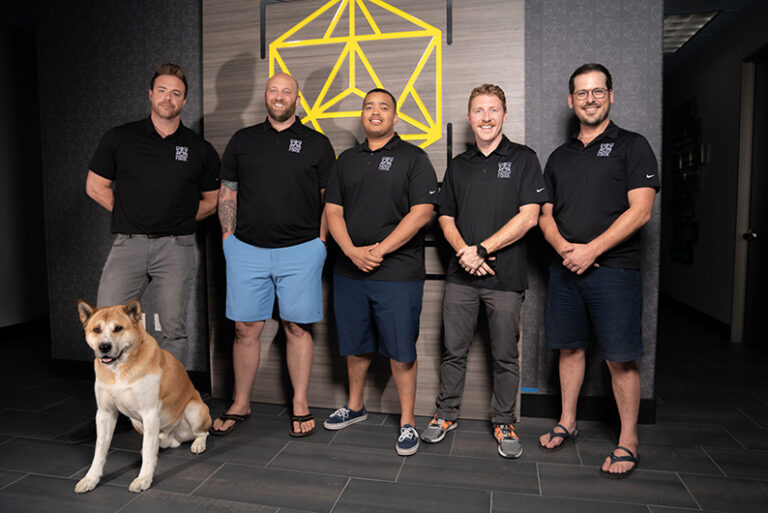
Since then, this 1500-watt fixture has been sold tens of thousands of times to commercial and home growers around the world. From that prototype, Fohse designed additional fixtures such as the F1V and the O6i, among others.
Innovation and Vision
The name “Fohse” is pronounced with a long ‘o’ sound and stems from the Greek root word “phos.” To make the branding their own, Fohse changed the spelling and created the acronym: the Future of Horticulture Science and Engineering, resulting in a company name full of meaning.
Fohse lighting is designed specifically for the cannabis industry. According to company data, Fohse lights coupled with hands-on, personalized service have helped growers increase dry yield harvest by 65% and reduce energy usage by 16%.
“Our staff is very driven,” shared Leo Wilson, chief marketing officer for Fohse. “The founders’ goal was to offer the cannabis industry a product that had not been offered before. In addition to the highest quality of lighting, we create lasting relationships with all of our clients.”
Unwavering Commitment
The Fohse team prides itself on customer service. Team members say when you buy Fohse lighting, you’re not simply purchasing a fixture, you’re acquiring a team of experts and a partnership with the brand.
“Our goal is to offer unparalleled value to our customers,” Wilson said. “This includes deep industry connections, cultivation consultants, and much more. We don’t just break ties with our clients once their lights are delivered.”
Fohse works with clients across the globe. It’s evolving and growing with the industry and ready with solution-focused products when new cannabis hotspots emerge across the country, such as what’s currently happening in Oklahoma.
“Oklahoma is still an emerging market,” Wilson said. “We know things are moving at a rapid pace in that state, and we also know that new growers will have a lot of questions and may run into issues, so we’re excited to provide them with solutions.”
Building Relationships
Jim Belushi is a faithful client of Fohse and said the company helped him “see the light.” Growers are learning that indoor cultivation facilities allow for more yield and control. LED lighting takes less energy to create more photons and reduces HVAC consumption because it runs cooler than traditional lights.
In terms of price point, while LED lighting may be more expensive on the front end, growers must consider the efficiency and lifespan. A cheaper HPS bulb typically lasts eight months, or at most 12 months. In contrast, a Fohse LED light offers a warranty of five years and a lifespan of 25 years.
“The Fohse team is constantly thinking outside the box in innovative and creative ways. Our clients’ success is our success. When they succeed with high yield and more sellable weight, we win with that,” Wilson said.
The Oklahoma Tech Zone was first featured in the summer 2022 issue of Cannabis & Tech Today. Sign up here to receive the next issue in your inbox.
Author
-

Patricia Miller is an executive editor at Innovative Properties Worldwide. She explores science, technology, and policy shaping the legal cannabis sector. Follow her work when you subscribe to Cannabis & Tech Today at cannatechtoday.com/subscribe/ or visit her website https://patriciamiller.squarespace.com/.

